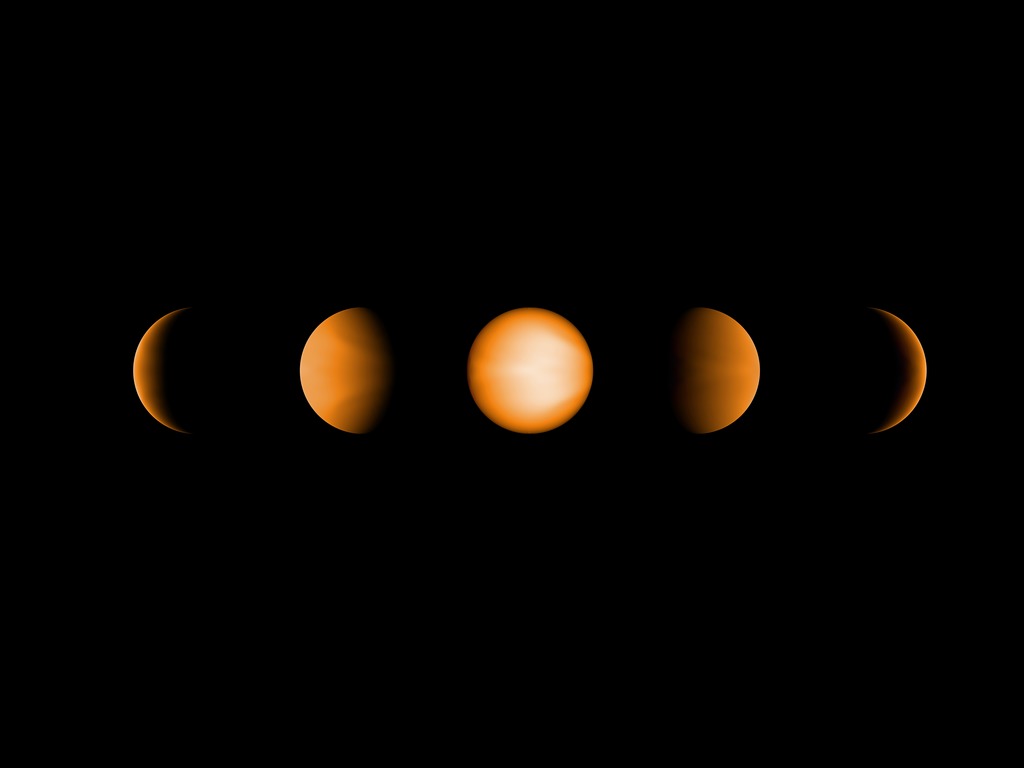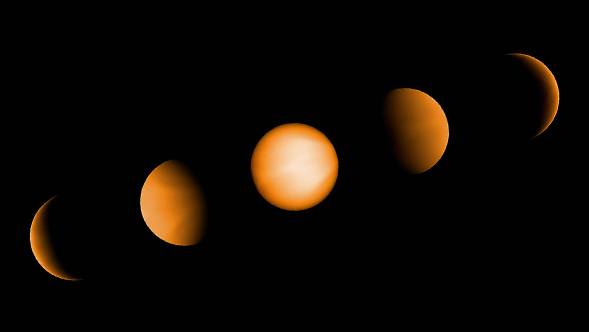
Credit: NASA/JPL-Caltech/Vivien Parmentier/Aix-Marseille University (AMU)
Simulation • August 9th, 2018 • ssc2018-10a
ssc2018-10a
These simulated views of the ultrahot Jupiter WASP-121b show what the planet might look like to the human eye from five different vantage points, illuminated to different degrees by its parent star. The images were created using a computer simulation being used to help scientists understand the atmospheres of these ultra-hot planets. Ultrahot Jupiters reflect almost no light, rather like charcoal. However, the daysides of ultrahot Jupiters have temperatures of between 3600F and 5400F (2000C and 3000C), so the planets produce their own glow, like a hot ember. The orange color in this simulated image is thus from the planet's own heat. The computer model was based on observations of WASP-121b conducted using NASA's Spitzer and Hubble space telescopes.
About the Object
- Name
- WASP-121b





